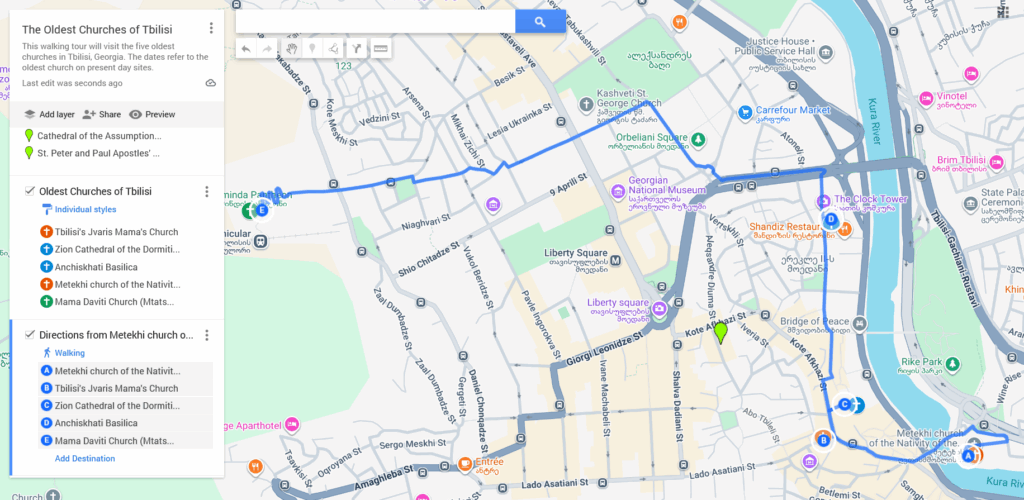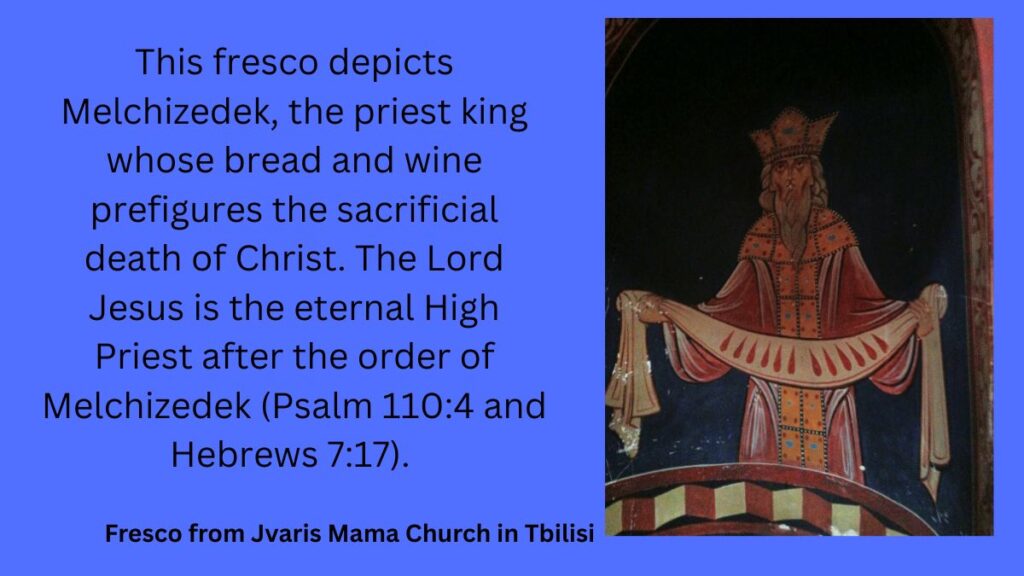- The Oldest 5th-6th Century Churches in Tbilisi, Georgia
- Jvaris Mama Church with its Armenian and Georgian Churches
In the walled area of the Jvaris Mama complex sits two churches that source in two different orthodox churches. The Jvaris Mama is Georgian while the St. Mary Church is Armenian. The Georgian is active while the Armenian building sits as a hollow shell reserved for pigeons. Let’s explore this monastery complex.

Golgatha Church
Jvaris Mama church means Cross of the Father. Jarvis is the Georgian word for cross, while surprisingly, Mama is the word for father. The word “father” refers to how the original church was connected to Jerusalem when nuns from there came to serve in the newly established city of T’pilisi. Until 1921, the Patriarchate of Jerusalem oversaw the location until the advent of the Soviet period.
Georgian chronicles and later local histories link the site to King Vakhtang I Gorgasali (5th century), who founded and established the city of Tbilisi. The Monastery of the Cross, founded by the Byzantines in the 4th century, allowed the Georgians (specifically Mirian III of Kartli) to manage the site after the conversion of the Georgian kingdom.[1]The Wellspring of Georgian Historiography: The Early Medieval Historical Chronicle The Conversion of Katli and The Life of St. Nino, Constantine B. Lerner, England: Bennett and Bloom, London, 2004, … Continue reading This Jvaris Mama links to that monastery in Jerusalem. King Vakhtang I modeled the church and monastery after those in Jerusalem. He was very orthodox and opposed Persian Zoroastrian influences within his empire. In the 5th century, this church would have been the religious center, accompanied by a monastery. On the Northeast side of the river, he placed his imperial church, the Metekhi Church, and a palace overseeing the area.
According to tradition, nuns from Jerusalem came to Tbilisi, and this church was made for them. The concept of an ascetic life flourished in the 5th century, and it is quite possible that this period encouraged such establishments. Monasteries incorporated education, crafts, agriculture, and pilgrimages, so the nearby grounds most likely included spaces to accommodate these activities. So the complex originally fit beyond the current walls.
After Tamerlane’s destruction of the church and city (in 1386 and at least eight more invasions until 1403), the church needed to be reconstructed. Today, the church is a 16th-century building that has gone through multiple renovations. Even during the Soviet period, it was used as a library; the current use of the church began in 1989, when Georgia gained its independence. However, the inside frescoes are from the 16th century, which the Soviets whitewashed over.
Georgian Interior Frescoes
The interior of the church is full of frescoes and a few icons. These images, dating back to the 16th century, offer an Eastern Orthodox perspective on several key areas. A visit ought to notice the use of blue to show the divine connection of Christ. The name of the church refers to the cross, and multiple crosses show that Christ died on the cross, which gives us the victory. A deliverance from death, the wages of sin, and one scene shows that Christ has broken the door of death and Hades. He has the key to open the door to eternal life.


Courtyard Garden
The courtyard hosts graves, spolia, housing, and an Armenian church, but it is not a functioning monastery today. The garden space has a few graves and a possible 6th-century stone mortar.
Proof of it 5th Century Origin

The Jarvis Mama church has a traditional history dating back to the 5th century; however, it appears that no significant archaeological work has been conducted. For Georgians, their traditions are proof and fact. In the yard, a possible 6th-century stone mortar and other lintel-like or grave lid holders give external evidence of an older site. However, no researchers have examined the ground area or datable artifacts, and no publication has recorded the evidence to back a 5th-century foundation. This does not mean the original church did not originate in the 5th century; instead, it suggests that this idea is based on local church history.
Armenian St. Mary of Norashen Church
The Armenian Holy Mother Church stands as a testament to the strong Armenian population that came to this city between the 12th and 16th centuries, after the Seljuk invaders were expelled.
This church is situated within the complex, and in the series, I will explore this church.
Explore how Islam and Christianity differ:
References
| ↑1 | The Wellspring of Georgian Historiography: The Early Medieval Historical Chronicle The Conversion of Katli and The Life of St. Nino, Constantine B. Lerner, England: Bennett and Bloom, London, 2004, p. 35 |
|---|
Leave a Reply